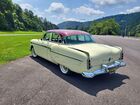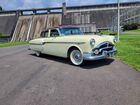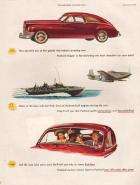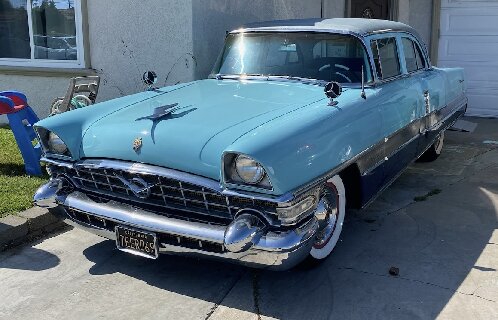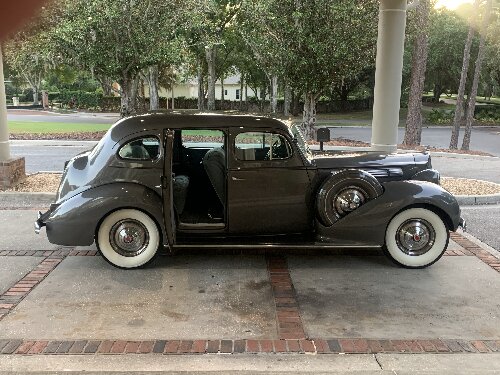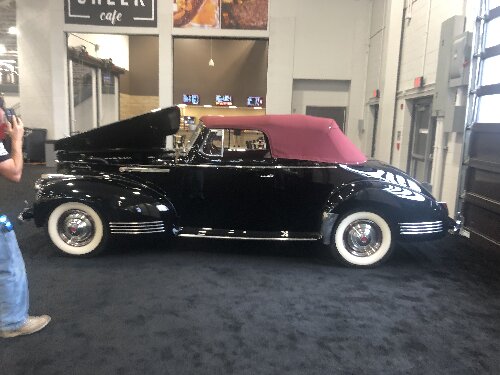|
1935 packard 111
|
||||
|---|---|---|---|---|
|
Just popping in
|
I recently inherited my fathers 1935 Packard 111. I have helped work on it for my entire life but I am now going to be doing maintenance and repair now onward. Overall the car is in great shape but needs a couple of little things to improve the ride.
Firstly is there a site you can recommend for maintenance info and parts? Secondly the front drivers side door is not opening when the handle is turned but it works on the inside. I took it apart and seems like the inner handle square is no longer square. Any suggestions on a fix? Thank you for any insight and help. I am looking forward to being a Packard owner for a long time. -Pat
Posted on: 2023/4/28 10:45
|
|||
|
||||
|
Re: Packard Bikes
|
||||
|---|---|---|---|---|
|
Home away from home
|
Regarding Hogg Junior High School, it was no doubt named after Texas Governor Jim Hogg, who was a very remarkable man.
Besides being governor, and among a great many other notable accomplishments, he was a principal founder of The Texas Company, later known as Texaco. He was also the father of Ima Hogg, a most gracious lady, herself of diverse accomplishment, her peculiar name notwithstanding.
Posted on: 2023/4/28 10:00
|
|||
|
||||
|
Re: White wall product inquiry
|
||||
|---|---|---|---|---|
|
Home away from home
|
I think you're correct on that, since some tires yellow very quickly, and others do not.
I've seen some very old wide whites on junkyard cars that have weathered to a pure white. Most seem to yellow or turn brownish and stay that way. New tires have a srtong odor, indicating that volatile substances are evaporating from the tire. With any tire made after WWII, those substances would probably be assorted petrochemicals. Old latex items seem prone to yellowing, and latex diaphragm material/gasket packing definitely yellows, even if kept away from other material. I've found that even blackwall tires lose their new look and strong odor, even when kept in a cool dark place, un-mounted.
Posted on: 2023/4/28 9:44
|
|||
|
||||
|
Re: 1951 200 Vacuum Wiper Motor
|
||||
|---|---|---|---|---|
|
Forum Ambassador
|
Not sure exactly what you mean but nothing in the motor holds vacuum when it is off. The slider valve on top of the motor operated by the wire cable prevents vacuum from entering from the engine hose connection on the passenger side of the motor when it is turned off. On the other side of the valve the rest of the motor is open to air. The sliding valve covers different port openings but when off, only the park position port gets vacuum. Valve and paddle in park position should both be sealing tightly preventing a vacuum leak to any of the other ports or to the outside.
When you turn motor on the valve slides. It closes the park port to vacuum then uncovers the main passage into the motor. Vacuum is allowed to enter motor where it is immediately passed to a second internal valve which directs the vacuum to one side of the paddle. Paddle then starts moving. This second valve also allows the other side of the paddle to be open to air so it can be free to move as vacuum pulls it to one side. As the paddle nears the end of its travel in the first direction a mechanism operated by the paddle switches the internal valve. Vacuum is redirected to the formerly open side of the paddle and it can start moving the opposite direction. At the same time the internal valve switched vacuum sides it opened the first side to air so the paddle could move. This back and forth action repeats as long as the motor is on. The main port the slider valve uncovers when you turn the motor on is actually a thin slot and motor speed is somewhat controlled by how much of the slot the slider valve uncovers so more or less vacuum can enter. When the valve slides to off again the main port closes and park port connects to vacuum so paddle is forced past its normal operating sweep range to pull the blades down to the chrome molding. When the paddle reaches park position it closes the port which should prevent any leaks as the motor sits. On motors used from around 48 to 53 there is a second hose connection located on the drivers side of the motor. That connection will be just sitting empty unless the optional windshield washer is installed. When the operator knob is turned opposite the direction needed to turn the wiper motor on there will be spring tension felt. Turning that direction and holding the knob against the spring tension causes the sliding valve to move a small amount to the other side of the off position in order to uncover another port and allow vacuum to reach that second hose connection to operate the washer.
Posted on: 2023/4/28 9:10
|
|||
|
Howard
|
||||
|
||||
|
Re: White wall product inquiry
|
||||
|---|---|---|---|---|
|
Forum Ambassador

|
I suggest that the degree of yellowing of white sidewalls is more related to the tire maker's selection of the white rubber formulation, tire construction including the use of barrier layers, and after mounting the local environmental conditions like UV intensity and duration, atmospheric ozone concentration, etc. than the result of the use of chemical cleaners and tire gloss compounds.
PS. I used Bleche-White and Armorall tire dressing on a set of Lester bias ply tires that I had on my car for nearly 26 years. Tread wear aside, the tire's appearance after all that time defied its age.
Posted on: 2023/4/28 8:53
|
|||
|
||||
|
Re: White wall product inquiry
|
||||
|---|---|---|---|---|
|
Home away from home
|
"Nitrogen diffuses more slowly through the tire than air (which is 79% nitrogen anyway), and is pretty non-reactive with rubber compounds. The more stable tire pressure is with time, not temperature."
If oxygen diffuses through the tire carcass, and if oxygen is a factor in causing yellowing, and if it is the oxygen componnet of air that diffuses most rapidly thorugh the tire carcass, it seems plausible to me that replacing air under pressure in the tire with pure nitrogen under pressure might be expected to reduce yellowing. Notice that in my original post relating to nitrogen, I used the word "might".
Posted on: 2023/4/28 8:10
|
|||
|
||||
|
Re: Motor suddenly dying
|
||||
|---|---|---|---|---|
|
Just can't stay away
|
Thanks, that is exactly why I posted, haven't owned a Packard for almost 30 years, might as well be new to it, especially the 6V aspect. Thanks, I will get on to the things you and BigKev pointed-out, and as always thanks for the support folks!
Posted on: 2023/4/28 8:09
|
|||
|
||||
|
Re: Motor suddenly dying
|
||||
|---|---|---|---|---|
|
Home away from home
|
It's possible the electric fuel pump or related wiring failed.
(Fuse?) If the electric fuel pump is pushing fuel through the stock fuel pump, be sure that the diaphragm in the stock fuel pump has not ruptured, allowing fuel to flow into the crankcase instead of into the carburetor. I would make sure that no fuel is reaching the crankcase, then determine if the ignition system is working or not. If you have ignition, it's almost certainly a fuel system issue. A timing chain issue is not out of the question, but unlikely. Don't overlook the obvious, such as a broken wire at the coil, the ignition resistor, if present, or some other minor malfunction.
Posted on: 2023/4/28 8:03
|
|||
|
||||
|
1951 200 Vacuum Wiper Motor
|
||||
|---|---|---|---|---|
|
Home away from home
|
Should the vacuum wiper motor hold a vacuum when off?
Posted on: 2023/4/28 7:39
|
|||
|
||||

